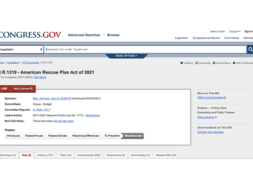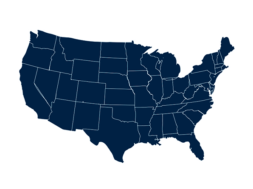
The DOL’s New Overtime Rule: How Schools Need to Prepare
By Matthew I. Penfield, Esq., Bressler, Amery & Ross, P.C.
On May 23, 2016, the U.S. Department of Labor (“DOL”) published its Final Rule updating the Fair Labor Standards Act’s (“FLSA”) overtime regulations. The impact of these changes will be immediate and far-reaching. The overtime exemptions for the executive, administrative, and professional classifications are more than doubling the minimum salary requirement. Effective Dec. 1, 2016, the minimum annual salary level required to satisfy these exemptions is jumping from $23,660 to $47,476. Despite requests from thousands of employers to delay implementation or provide a multi-year roll-out of the new rule, the DOL insists that employers must be in full compliance with the new rule by Dec. 1, 2016.
The DOL attempted to soften the effects of that announcement by simultaneously issuing guidance reminding schools that the regulations offer an exemption from the federally mandated minimum wage and overtime for employees whose primary duty is teaching.
Even though that exemption may provide some peace of mind with regard to teachers, private sector schools must still comply with the new overtime rule for all other employees (i.e., non-teacher employees), who are classified as exempt under the executive, administrative, and professional exemptions.
This article will provide an overview of employer obligations under the FLSA. Next, it will discuss the changes these new overtime rules make to the executive, administrative, and professional exemptions. There is also a brief discussion of the exemptions currently available to schools, which were not revised. Finally, there is a roadmap with thoughts on how private sector schools should evaluate their workforce and determine how to implement policies and procedures to comply with the new rules.
The FLSA’s minimum wage and overtime requirements
As employers are aware, the FLSA sets a minimum wage and requires employers to pay each employee an hourly wage of at least $7.25.1 Many states have increased the minimum hourly wage employers must pay. For example, Florida’s minimum wage is $8.05 per hour, California’s minimum wage is $10.00 per hour, and New York’s minimum wage is $9.00 per hour. Some states have set increases to occur at specific dates in the future. Additionally, some counties and cities have set their own minimum hourly wage for workers. As such, and in addition to complying with federal minimum wage requirements, private sector schools should make sure they are in compliance with the specific state, county, and city wage and hour laws, if any, for the geographical areas where they have employees. The FLSA’s overtime rules state that no employer shall employ any employee for longer than 40 hours per week unless the employee receives overtime compensation at a rate of not less than one and one-half times the regular rate of pay.2 Absent an exemption, these general rules apply to all employees engaged in interstate commerce, including private sector schools.
Immediate changes to the executive, administrative, and professional exemptions
There are a number of exemptions available for certain categories of workers. Some of the exemptions apply to both minimum wage and maximum hour requirements and others only affect the maximum hour requirement. The new overtime rule makes significant changes to the exemptions that are commonly referred to as the “white collar” exemptions (the executive, administrative, and professional exemptions). The white collar exemptions provide that the minimum wage and maximum hour requirements, shall not apply to these employees.3
To qualify for one of these exemptions, an employer must satisfy three tests: (1) the salary basis test; (2) the salary level test; and (3) the primary duty test. The salary basis test means that the employee is paid a salary for the services he or she provides. “Being paid on a “salary basis” means an employee regularly receives a predetermined amount of compensation each pay period on a weekly, or less frequent, basis.”4 The salary level test sets the minimum weekly salary amount an employee must receive to be eligible for one of these exemptions. The salary level test received the most significant change in the new overtime rule.
Since 2004, the salary level for executive, administrative, and professional employees has been $455 per week. Starting Dec. 1, 2016, the salary level will be $913 per week. When those weekly salary levels are calculated on an annual basis, the new overtime rule raises annual minimum salaries from $23,660 to $47,476.
That means employees who are currently overtime exempt but who make less than $47,476 a year will either need to be converted to hourly employees or will need to receive an increase in pay to at least the new required salary level.
The DOL considered, but then decided not to make any changes to the primary duty test for these exemptions. However, to fully evaluate whether changes are needed to your workforce, it will be important to review the primary duties required for each exemption. To satisfy the executive exemption, an employee must manage the enterprise or a department or subdivision of the enterprise. The employee must also regularly direct the work of at least two other full-time employees or their equivalent and have the authority to hire or fire other employees.5 These duties are fairly straightforward, and most employees who manage at least two full-time employees will meet this test. The administrative exemption is more difficult to apply. An employee satisfying the administrative exemption must have as their primary duty office or non-manual work related to management or general business operations. They must also exercise discretion and independent judgment on matters of significance.6 Those employees classified under the professional exemption generally must have knowledge of an advanced type in a field of science or learning.7 However, the professional exemption includes more than just learned professionals such as lawyers, doctors, and accountants. It also includes creative professionals and, as discussed below, teachers.
The new overtime rule also makes a significant increase to one other exempt classification – the highly compensated exemption. This exemption has a less stringent duty test compared to what is required under the white collar exemptions. According to the DOL, “A high level of compensation is a strong indicator of an employee’s exempt status.” As a result, when evaluating highly compensated employees, the DOL has eliminated “the need for a detailed analysis of the employee’s job duties.”8 The new salary level for the highly compensated employee exemption is $134,004 per year (an increase of $34,004 from the current level of $100,000).
Ongoing changes to the white collar exemptions – an uncertain future
In an unprecedented move, the new regulations not only raise the salary level for these exemptions this year, they also require an update to the salary level every three years. “Beginning on Jan. 1, 2020, and every three years thereafter, [the salary level shall be] updated to equal the 40th percentile of weekly earnings of full-time nonhourly workers in the lowest-wage Census Region in the second quarter of the year preceding the update as published by the Bureau of Labor Statistics.”9 This change adds a level of uncertainty to the minimum salary employers must pay to qualify for these exemptions. Every three years employers will need to evaluate salaries and job duties and decide whether an increase is required to remain in compliance. If an increase is required, employers will then have to decide whether to re-classify affected employees to hourly or raise salaries to meet the new salary level.
The DOL has projected that, at the time of the first update on Jan. 1, 2020, the minimum salary level will be $51,168.10
However, other groups have warned the minimum salary is likely to be much higher. For example, the Chamber of Commerce of the United States provided analysis to the DOL showing that by 2020 the salary level could be as high as $95,836.11
More troubling is the fact that employers will have only a few weeks to make these important decisions after the Bureau of Labor Statistics publishes its data. Quarterly data is available between five and six months after the end of the quarter.12 That means the second quarter data will not be available until the December before the updated salary level goes into effect in January.
In the Final Rule, the DOL also stated it may change the primary duty test at some point in the future. With that in mind, employers would do well to take this opportunity to review job duties and classifications of all employees and make sure those employees who are classified as exempt under one of these exemptions are truly exempt.
Teachers and academic administrative employees
The changes to the salary level for the executive, administrative, and professional exemptions are not industry specific but, rather, apply equally to all employers. However, in response to concerns that these changes would significantly increase the cost of higher education, on the same day the Final Rule was announced, the DOL issued Guidance for Higher Education Institutions on Paying Overtime under the Fair Labor Standards Act. While making clear that the new minimum salary level applied generally to all the white collar exemptions discussed above, the DOL reminded schools that “certain provisions of the FLSA regulations apply to many white collar employees at higher education institutions that may make them exempt from overtime compensation, even though they earn below the new salary level.”13 More specifically, the DOL noted that there are special rules that apply to employees whose primary duty is teaching and special salary level rules for academic administrative personnel.
“Teachers are exempt if their primary duty is teaching, tutoring, instructing, or lecturing in the activity of imparting knowledge” as long as they are employed by an educational establishment.14 Not only are teachers exempt from the overtime provisions, the compensation requirements (i.e., amount of salary) shall not apply to teachers.15 There are very few published opinions discussing career colleges and the teacher exemption.16 However, the term educational establishment is defined broadly in the regulations and includes “an elementary or secondary school system, an institution of higher education or other educational institution.”17 The Wage and Hour Division has taken the position that “instructors at the career school qualify for the teaching exemption in section 13(a)(1) of the FLSA.”18 In its recent guidance published on May 18, 2016, the DOL also stated that adjunct or part-time instructors are not subject to the salary level or salary basis tests.19 As such, it would certainly appear that the exemption from the minimum salary test applies to career school teachers, whether full-time or part-time.
There is also a different salary test available for academic administrative employees. Academic administrative employees include “department heads in institutions of higher education” and “academic counselors who perform work such as administering school testing programs, assisting students with academic problems and advising students concerning degree requirements.”20 A catch-all provision in the regulations includes other employees with similar responsibilities. These employees will be deemed to satisfy the FLSA salary level test if they are paid either the new FLSA minimum salary level or “on a salary basis which is at least equal to the entrance salary for teachers in the educational establishment.”21
It is important to review the regulations relating to these academic exemptions to determine which employees may fall into one or both of these classifications. Executive, administrative, and professional employees who do not meet one of these academic exemptions may still have job duties that qualify for one of the white collar exemptions available to all employers.
Next steps
The next few months are crucial, and we recommend that all employers use this time to evaluate and make necessary changes before the Dec. 1, 2016 deadline. The new overtime rule is likely to impact at least some of your employees. You will have to decide whether to raise salaries to the new minimum salary level, pay salaries and overtime for any hours worked in excess of 40 hours each week, reorganize schedules and/or work to make sure employees are not working more than 40 hours per week, or adjust hourly rates to compensate for the fact that overtime will likely be paid. It is important to have the data and information necessary to help you make these decisions. Below are thoughts regarding what steps employers should consider taking in order to be in compliance when the new salary level takes effect later this year.
Step one: evaluate your existing job duties and salaries. If you have not performed a full audit of salaried exempt job descriptions and duties in the last several years, you should do that now. This information will help you determine which employees may be treated as exempt from overtime and which employees must be paid overtime. If you decide not to perform a complete internal audit, at a minimum, you should identify all employees classified as exempt but whose current salary falls below the new salary threshold of $913 per week.
Step two: decide to increase salaries or pay overtime. When deciding whether to increase salaries for certain positions or re-classify those employees as hourly, you should consider how many hours the employee works and what duties he/she performs. This may be difficult because exempt employees typically are not required to track hours. Regardless, that information will be necessary to perform a financial analysis that compares the costs of raising salaries with the potential costs of paying overtime compensation if that employee is re-classified as hourly.
One reason you need to know how many hours per week employees actually work is that paying time-and-a-half to employees who work significant overtime can be expensive. Increasing an employee’s salary to the new minimum salary level may be more cost-effective even if it is a substantial increase. If you decide to increase salaries, you should make sure those employees are performing duties that meet one of the primary duty tests. Another option is to re-classify employees as hourly. If you expect an employee will work more than 40 hours per week, you may consider lowering the employee’s hourly rate since you will be paying overtime. If there is enough work for more than one employee, you may decide to hire one or more employees and then prohibit or limit any overtime. All of these options depend on your needs and circumstances. The most important task is to engage the process and make an educated decision rather than simply react to the new overtime rules without performing any meaningful analysis.
Step three: convert, educate and train. After you make the decision to increase employee salaries or treat employees as hourly and pay overtime compensation, the hard work begins. Communication is the key to success and how this message is delivered to employees may have a substantial impact on employee morale. We suggest that employers be candid with employees and explain that the changes are necessary to comply with changes in federal law.
Of course, if you convert previously salaried employees to hourly, you will need to communicate the new hourly wage and determine how you will track hours worked. For some employees, this may be as easy as adding timekeeping software to a computer or having the employee “clock in” the same as other hourly employees, but for others, this task will be more difficult. Regardless, managers will need additional training on monitoring the hours worked by their direct reports. For employees moving from exempt to non-exempt (overtime eligible), you will also need to decide how to address work from home or other off-site work.
For example, when non-exempt employees answer calls or emails or perform other work away from work and outside of regular hours, that time is compensable and you will need to find a way to accurately record that time or take steps to limit or prohibit such work.
Step four: implementation is ongoing. Because the new minimum salary level will be recalculated every three years, the process outlined above will likely need to be completed each time that occurs. We suggest developing a procedure that examines salaries and job duties on a regular basis. Even if steps two and three are not necessary every year, tracking and compiling the data will prove to be a helpful endeavor the next time you have to go through this process and analysis.
Resources
1. 29 U.S.C. 206(a).
2. 29 U.S.C. 207(a).
3. 29 U.S.C. 213(a)(1).
4. https://www.dol.gov/whd/regs/compliance/overtime/modelPolicy_PF.htm (last visited August 1, 2016).
5. 29 CFR 541.100.
6. 29 CFR 541.200.
7. 29 CFR 541.300.
8. 29 CFR 541.601(c).
9. 29 CFR 541.607(a)(2).
10. Federal Register, Vol. 81, No. 99, Monday, May 23, 2016, p.32393.
11. United States Chamber of Commerce Comments on RIN 1235-AA11, September 4, 2015, p.34.
12. Bureau of Labor Statistics, http://www.bls.gov/cew/releasecalendar.htm (last visited August 1, 2016).
13. Guidance for Higher Education Institutions on Paying Overtime under the Fair Labor Standards Act, United States Department of Labor, May 18, 2016, p.2.
14. Guidance for Higher Education Institutions on Paying Overtime under the Fair Labor Standards Act, United States Department of Labor, May 18, 2016, p.6 (citing 29 CFR 541.303).
15. 29 CFR 541.600(e).
16. Franklin v. Breton International, Inc., et al., 2006 U.S. Dist. LEXIS 88893, (S.D.N.Y. December 11, 2006) (finding the teacher exemption applies to instructors).
17. 29 CFR 541.204(b). The regulations also clearly provide that “for purposes of the exemption, no distinction is drawn between public and private schools, or between those operated for profit and those that are not for profit.” Id.
18. DOL Wage and Hour Division Opinion Letter, FLSA2006-41, October 26, 2006.
19. Guidance for Higher Education Institutions on Paying Overtime under the Fair Labor Standards Act, United States Department of Labor, May 18, 2016, p.7.
20. 29 CFR 541.204(c)(1).
21. 29 CFR 541.204(a)(1); 29 CFR 541.600(d).
MATTHEW PENFIELD is an attorney with Bressler, Amery & Ross, P.C. in its Birmingham, AL office, and a member of the firm’s Labor and Employment Group. Matthew regularly advises employers on a wide range of issues relating to wages, policies, discipline, and compliance with federal and state law. Matthew regularly represents employers in employment disputes filed in state and federal court, as well as in various arbitration forums.
Contact Information: Matthew I. Penfield // Associate // Bressler, Amery & Ross, P.C. // 205-820-8232 // mpenfield@bressler.com // www.bressler.com // Social Media: www.linkedin.com/in/matthew-penfield-942a9217











